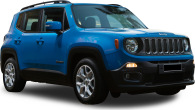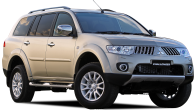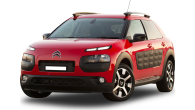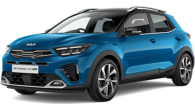The Eclipse Cross is somewhat of an anomaly in Mitsubishi’s portfolio.
Launched in late 2017, the angular compact-ish SUV has sat uncomfortably close in size to its closely-related ASX stablemate – and was in fact developed as the latter’s replacement but for sales that seemed to grow as the last decade wore on – but nudged larger alternatives like the Toyota RAV4 in price and positioning.
Never hitting the mark with either consumers or critics, let’s call it a classic falling-between-stools scenario. Awkward styling didn’t help at all either.
Now, and in a very un-Mitsubishi move given how comparatively young the Eclipse Cross still is, a substantial restyle has been rushed to market for 2021, smoothing out some of the odd details and stretching the overhangs (by 140mm in total) for extra space both inside the boot and between the smaller and cheaper ASX. The objective is to close the gap against the likes of the Mazda CX-5.
With a few other changes also in tow, is the second time the charm for the underperforming Eclipse Cross? We take a long hard look at the expected bestselling LS in all-wheel drive (AWD) guise to find out.
Mitsubishi Eclipse Cross 2021: Ls (Awd)
| Engine Type | Turbo 4, 1.5L |
|---|---|
| Fuel Type | Unleaded Petrol |
| Fuel Efficiency | 7.7L/100km (combined) |
| Seating | 5 |
| Price From | $25,740 - $31,790 |
| Safety Rating |
|
Does it represent good value for the price? What features does it come with?
Every Eclipse Cross is powered by a 110kW/250Nm 1.5-litre four-cylinder turbo petrol engine and continuously variable transmission (CVT auto) combo, giving it a clear performance advantage over the older ASX.
Priced from $35,090 before on-road costs, the LS is the mid-tier grade, sitting some $4800 upstream of the base ES 2WD (front-wheel drive), and is the least expensive AWD. If you don’t need that, the $32,590 LS 2WD will save $2500 (and 64kg).
Every version includes seven airbags, autonomous emergency braking (AEB), Forward Collision Mitigation, Active Yaw Control, cruise control, paddle shifters, 8.0-inch touchscreen, Bluetooth connectivity with audio streaming and voice control, Apple CarPlay/Android Auto, twin USB-A ports, digital radio, rear view camera, climate control air conditioning, cargo blind, 18-inch alloys and a conditional 10-year warranty.

Metallic and pearlescent paint adds $740 extra while prestige paint requires another $940.
Key LS additions are Lane Departure Warning, auto high beam, rear parking sensors, keyless entry/start, auto on/off headlights and wipers, front fog lights, privacy glass, auto up/down windows, roof rails, heated/power folding door mirrors, rear armrest with cupholders, electric park brake, brake auto hold and an audio upgrade.
Now, for $100 less, the $34,990 Aspire ditches the LS’ AWD but gains important safety like Rear Cross Traffic Alert, Lane Change Assist, Blind Spot Warning, front parking sensors, adaptive cruise control with stop/go functionality and a surround-view camera, as well as dual-zone climate control, suede-like upholstery, heated front seats, a powered driver’s seat and another audio upgrade. Bargain!
This means if you want to combine the Aspire’s driver-assist safety extras with AWD, you’ll need to find $40,290 for the Exceed AWD, that also ushers in leather, LED headlights, powered passenger seat, sat-nav, double sunroof, a head-up display, heated steering wheel and heated rear seats. There’s also an Exceed 2WD from $38,290.
How much do you need AWD?
The LS AWD is $1200 cheaper than the similarly-equipped Kia Seltos Sport+ AWD, costs nearly $3500 less than the corresponding Mazda CX-30 Touring AWD, but is over $2000 more expensive than the (less powerful) Toyota C-HR GXL AWD and a whopping $5500 over the (albeit smaller) Hyundai Kona Active AWD, to name some of its fiercest rivals.
That said, the Mitsubishi does undercut most popular larger medium SUV alternatives with approximating or higher equipment levels by several thousands of dollars, like the Mazda CX-5 Maxx Sport AWD, Subaru Forester 2.5i-L, Toyota RAV4 GXL Hybrid AWD and Honda CR-V VTi-L AWD.

Overall, then, the LS AWD is priced to sell, if not exactly equipped to excel with its incomplete driver-assist safety suite, revealing a gap in the Eclipse Cross’ range. How about the non-existent $37,490 Aspire AWD grade, Mitsubishi?
Is there anything interesting about its design?
Here’s something to bore your friends at the next pub trivia night.
The ASX, Eclipse Cross and Outlander all sit on the same 2670mm wheelbase. The upshot of this is what’s probably the most classically SUV-proportioned of the trio, but the rear track width seems too narrow, with the wheels sitting a bit bow-legged overall.
Over the earlier iteration, the Eclipse Cross Series II is 140mm longer – 105mm extra in the rump and the remaining 35mm in front-end overhang. Despite being a quite minor change, the extra length combined with the rounded rear profile and deletion of the two-glass tailgate improve the Mitsubishi’s appearance dramatically. That old Pontiac Aztec look is gone. It also goes some way in justifying the model’s medium-SUV aspirations.
Up front, the brand’s revised ‘Dynamic Shield’ grille treatment is fussier than before, but still modern and distinctly Mitsubishi.
It will be interesting to see if Australian consumers finally warm to the Eclipse Cross’ styling, for there are still plenty of fussy detailing like the upswept side strakes and front stacked fog-light housing.
How practical is the space inside?
Right now, the Eclipse Cross’ interior and dashboard design is arguably Mitsubishi’s best, with a pleasing mix of symmetry and functionality – especially since the fiddly old touchpad has been binned for that larger 8.0-inch touchscreen.

Attractive cloth covers well-sculptured front seats (though the driver’s lacks lumbar adjustment), ahead of an excellent driving position that’s aided by a tilt/telescopic steering column. Combined with the large reverse camera and even larger exterior mirrors, vision out is fine for the folks up front.
There are plenty of thoughtful details inside. The door pockets look like they were created especially for larger bottles; same goes for the cupholders in the centre console; both the glovebox and centre armrest-cum-bin are hungry for stuff; the LS’ steering-wheel column-mounted paddle shifters – as useless as they are with a CVT – are big enough to be seen from space; and there are a pair of USB-A outlets above a small phone storage slot… though it isn’t quite long enough to accommodate the compact iPhone SE2, let alone larger alternatives.
And there-in lies the age-related compromises that the Eclipse Cross falls into. Though it was released in 2017 and despite the introduction of the larger touchscreen, there isn’t the provision for today’s big smartphones. And why doesn’t the instrumentation support a digital speedometer (you’ll need to step up to the Aspire and its tacked-on head-up display for that). Plus, as we’ll see further down, there are some dynamic issues that abound.
Like in the front, rear-seat entry and egress are fine, and once perched up high on the rather flat cushion, vision remains a strong point, with the back windows falling almost all the way down. The 60/40-split backrest offers nine reclining settings (though the top ones are too upright) and there’s room galore for big feet under the front seats. The LS has a centre armrest (of dubious functionality as its backwards angle might promote spillage if you use the small dual cupholders sited within), a single map pocket, a 12V power outlet and overhead grab handles too.

But no USB ports exist back there. Why don’t the cushions slide forward and backwards anymore to increase/decrease legroom as required in the name of luggage space? That was one of the old model’s best rear-seat features. Where are the rear-seat face-level air vents? And oddments storage is meagre for a family car.

Compared to before, the 405-litre load area is usefully longer (in the previous version that capacity could only be bettered – by 10 per cent – with the seats slid all the way forward and the backrests in their most unnaturally upright position), with a high but flat floor and easy loading capability.

But the tailgate rake is acute, so no bar fridges or household air-conditioners back there please! There’s a light, bag hook and a pair of mounting eyelets built in the wheelarch covers, as well as a retractable blind, but otherwise, this is your lot. Pleasant. Easy. Hardy. Well made. That’s the Mitsubishi way.
What are the key stats for the engine and transmission?
While the Eclipse Cross employs a modified version of the ancient ASX’s GS platform that dates back to the mid-2000s, at least its 1.5-litre four-pot petrol turbo is still in the bloom of youth.
Dubbed 4B40, this 1499cc twin-cam direct-injection MIVEC variable-valve timing four-cylinder petrol engine delivers 110kW of power at 5500rpm and 250Nm of torque from 2000rpm and 3500rpm, for a (European-market) 0-100km/h sprint time of 9.8 seconds in AWD guise.

With eight speeds artificially set for more natural torque-converter-style responses, the CVT is the only transmission choice – there is no manual gearbox option, sadly.
How much fuel does it consume?
Tipping the scales at a hefty 1550kg, the Euro-V emissions-standard 1.5-litre four-pot turbo as found in the LS AWD officially averages 7.7 litres per 100km and 174 grams per kilometre of carbon dioxide emissions. Urban consumption is rated at 9.8L/100km and the extra-urban figure is 6.5L/100km. Respectable stuff.
It can run on standard unleaded petrol and, with a sizeable 60-litre fuel tank in tow, offers an average range of just under 780km between refills.
Out in the real world, though, we averaged a less spectacular 11.4L/100km over our week’s urban and rural driving route. Why the disparity? As with previous Eclipse Cross grades tested, this engine needs to be worked hard to hustle what is a comparatively heavy smallish medium SUV.
Warranty & Safety Rating
What safety equipment is fitted? What safety rating?
Here’s where the Eclipse Cross has some pretty obvious gaps in the range.
The Japanese-built LS includes important safety items like airbags (seven of them – dual front, curtain, side and for the driver’s knee), AEB, Forward Collision Mitigation, Active Yaw Control, hill-start control, Lane Departure Warning, auto high beam, rear parking sensors, auto on/off headlights and wipers and front fog lights. These are on top of the usual gear like stability control, traction control, anti-lock brakes with electronic brake-force distribution, four-wheel disc brakes and brake-assist.

However, right now you cannot buy a new Eclipse Cross with AWD for under $40,000 with combined Rear Cross Traffic Alert, Lane Change Assist, Blind Spot Warning, front parking sensors, adaptive cruise control with stop/go functionality and a surround-view camera. The similarly-priced Aspire 2WD can oblige but that’s front-drive, leaving the Exceed AWD as the only choice.
All versions have two outboard rear-seat ISOFIX points as well as trio of top tethers for child-seat straps.
Tested in December 2017 using a left-hand-drive front-drive European-model ‘Invite’ under the Euro NCAP regime, the original Eclipse Cross managed a five-star ANCAP crash-test rating, and still falls under the same score despite the remodelled nose and tail.
The AEB is operational between 5km/h and 80km/h, while the pedestrian detection system operates the Eclipse's AEB works between speeds of 15 and 140km/h.
What does it cost to own? What warranty is offered?
Mitsubishi has offered an industry-average five-year/100,000-kilometre warranty and roadside assistance for years, but in October, 2020 it introduced the Diamond Advantage.
The longest warranty for new vehicles sold to private buyers and small businesses in Australia, this is a conditional 10-year/200,000km offer that is transferable, and includes 10-year/150,000km capped-price servicing, up from the previous three-year/45,000km term.

Service intervals are every 12 months or 15,000km, with prices starting at $299 for the first five years, then $599, $299, $399, $399 and $599 for years six to 10 respectively. Roadside assistance is also available, for four years.
This is all a very big deal, especially for buyers who wish to keep their vehicles for many years.
However, the catch is that owners must service their vehicles at a Mitsubishi dealer – or it will instead revert to the five-year/100,000km coverage.
What's it like to drive around town?
The Eclipse Cross’ relative compactness makes it a boon to live with and drive around town. Short overhangs, big mirrors, a clear rear-view camera and a tight turning circle all help make parking and low-speed manoeuvring child’s play. It instantly feels like an easy and friendly machine, even for first timers.
Then there’s the powertrain – and this alone is a compelling reason to choose Eclipse Cross over the ASX and Outlander, which currently don’t offer the 1.5-litre turbo heart.

While the engine needs revs to really shine, the CVT is expertly tuned to provide eager yet smooth and quiet step-off acceleration, with speed coming on strongly as required. As a point-to-point urban commuter, it’s a refined and undemanding drive, supported by well-modulated braking, every single time. Nice work, Mitsubishi.
Even out on the open road, even with nearly 1600kg to haul about, the LS AWD is a rapid thing, pulling strongly right up to and beyond national highway limits in nearly no time at all.
However, if you suddenly need some extra speed quickly for, say, overtaking, the engine’s lack of cubic inches becomes apparent, as the driver must wait for the CVT to respond and the turbo to spool up again. In these situations, it can seem a little tardy. And vocal too, with the inevitable and dreaded drone associated with such gearboxes.
A couple of years back, the front wheels of an Exceed 2WD on test were prone to excess spin and traction loss, which made for some very scrappy progress; but today's AWD version suffers no such malady, putting all its power to the ground cleanly, even over damp or slippery roads.
Like we said earlier, the Eclipse Cross employs a variation of the GS platform that has underpinned two generations of Outlander and the unstoppable ASX. This includes a multi-link independent rear end, which for the facelift has seen a switch to larger dampers. This component set has been around for ages – and that’s both good (for proven longevity and durability) and not-so-good (for ride comfort and refinement).
On smoother surfaces, the freshly-retuned steering’s reaction to inputs is well measured, allowing for crisp and accurate direction changes, even at higher speeds, without seeming too sharp or nervous. It corners with reassuring confidence and control – no doubt aided by that fine AWD system – in all sorts of weather conditions. While we would appreciate a bit more feedback from the helm, most buyers probably won't be as bothered by that.
But – whether in the heart of the city or tracing along some snaking country tarmac – if the roads are bumpy, broken or uneven, the rack will rattle while the suspension’s firmness that does much to keep the SUV poised at speed will make the ride jittery and unsettled. The Eclipse Cross just can’t absorb or smother bad surfaces as competently as some rivals, and instead transmits what’s going on below to the vehicle’s occupants. Where’s the suppleness and pliancy?
Road and tyre noise intrusion, too, may be an issue for some. Perhaps the 18-inch wheel and tyre package (Toyo Proxes 225/55R18s) is too much for this ageing architecture to deal with.
Finally, a word about the Eclipse Cross’ abilities over gravel. Though it tracks fast and true on dirt, the ESC is a little too lax away from the bitumen; but the AWD's standard ‘Gravel’ setting (along with Snow’) makes the system feel far more alert and ready to react at speed. Mitsubishi’s rallying experience certainly seems to pay dividends here.
Verdict
There’s much to recommend in the 2021 Eclipse Cross.
More resolved styling, improved multimedia, more standard equipment and that unmatched conditional industry-beating warranty are decisive steps in the right direction.
But while there is a decent level of basic safety standard in the LS, it’s frustrating that the fuller suite of driver-assist systems isn’t available with AWD, unless you break the $40K barrier with the range-topping Exceed, undermining the Mitsubishi’s value.
Combined with some other equipment shortfalls and that lumpy ride that betray the age of the architecture, and it’s clear that this Eclipse Cross grade is at-best a middling effort, despite the facelift.
We can’t help think that Mitsubishi’s product planners ought to bring in that fictional Aspire AWD with all the available safety for around $37,000, for that's when the Eclipse Cross should really shine more brightly.
As it stands, the LS AWD isn’t quite there yet.
Pricing Guides



























.jpg)
.jpg)











































.JPG)


.jpg)
